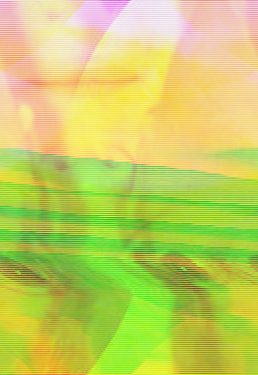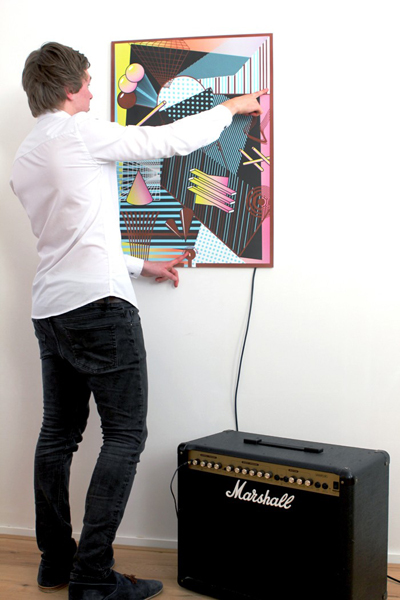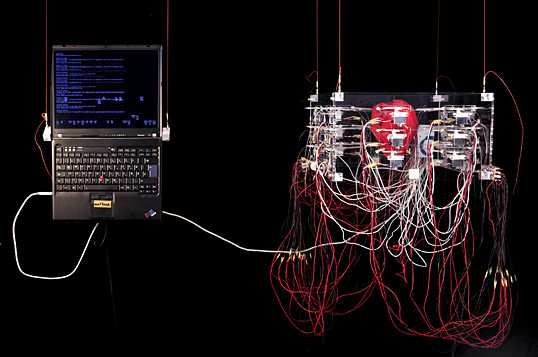Ciska Swaak
Contents
EXAMPLES CONTEMPORARY TECHNOLOGIES
GRAPHIC DESIGN
Sound Poster 1.0 , 2.0, 3.0
by Trapped in Suburbia
ABOUT THE SOUND POSTERS
The Sound Poster 1.0 is our first experiment in which we try to mix digital with analog or the other way together. The biggest reason is that the 'experience' is considerably larger. Digital installations / projects / apps are often linked to a screen / tablet and that means that for example the environment or material (tactility) play a minimal role while these aspects a large role have on our experience. The Sound Poster is the first experiment with what you can do with a poster (print) in combination with technology (digital). In this case, we uses the open source technology and software Arduino and is connected with conductive copper ink. When the resistance changes, the sound changes with: soft touch gives a different sound than hard on the poster prints. The sound is now based on a synthesizer sound, we are now working on a sequel in which the sound is more based on real classical instruments.
We got inspired by Kandinsky his music theory; music was very important for him and most of his work is based on music.
The Sound Poster is developed together with David van Gemeren.
""Postcard Player
by Uniform
ABOUT THE POSTCARD PLAYER
Combining the analogue spirit of vinyl records and music cassettes with the tactile qualities of print production and the breadth of digital data and services, The Postcard Player is a prototype designed to demonstrate how Paper Electronics could enable people to listen to digital music, or interact with other digital data and services in a more engaging way.
As a work-in-progress the Player has been exhibited in many different forms and iterations, each time providing more information about how people engage with it and how it could be improved. It was not conceived as a solution to a problem, it's a prototype to open a discussion about how physical interactions can enrich our engagement with digital media
The Player works with postcards printed using conductive inks. When they are put in the player, people can press the buttons printed on them to hear a piece of music. The cards have no electronic components in them, when they are placed in the player they act like switches that tell it what tracks to play.
BODY
PULSE
by Markus Kison
ABOUT PULSE
pulse (2012) is a live-visualization of recent emotional expressions, written on private weblogs hosted at wordpress.com. Weblog entries are compared to a list of emotions, which refers to Robert Plutchik’s seminal book Psychoevolutionary Theory of Emotion published in 1980. Plutchik describes eight basic human emotions in his book: joy, trust, fear, surprise, sadness, disgust, anger, and anticipation. He developed a diagram in which these eight emotions, together with their weakened and amplified counterparts, form a three dimensional cone, consisting of 24 areas. The cone is the basic form of pulse, which can enlarge in the 24 directions of the different emotions. Each time an emotion tag, or a synonym of it, is found in a recent blog entry, the shape-shifting object transforms itself in such a way that the new volume represents a piece of the overall current emotional condition of surfers on the Internet.
Credits This is the stable version of pulse created in may 2008 during my diploma thesis in the Digital Media Class at the University of the Arts Berlin.







